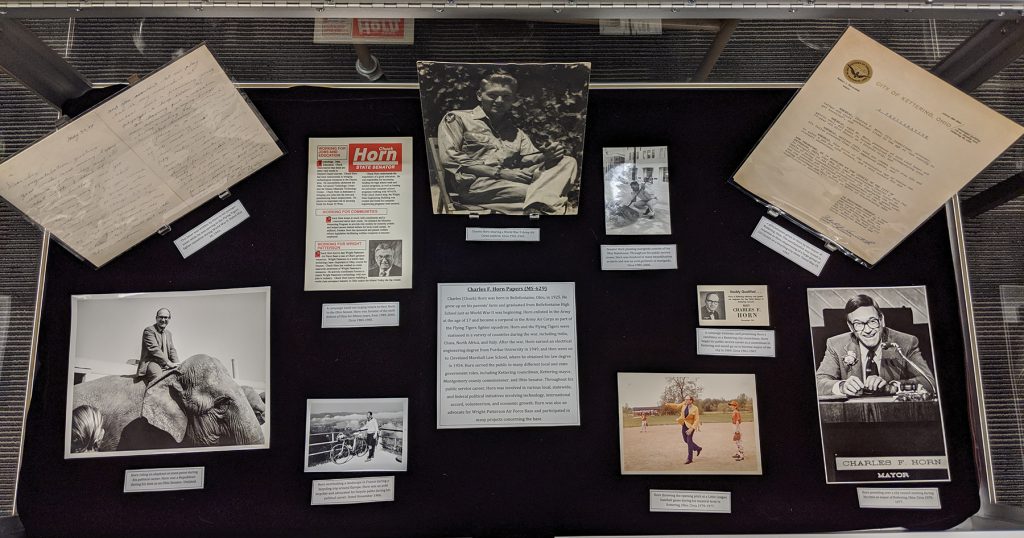My name is Anna Helmig and I am a graduate student in the Wright State Public History Program. This past summer, I had the privilege of working Wright State’s Special Collections and Archives to process the Charles F. Horn Papers (MS-629) as part of my capstone project. In this post, I’d like to reflect a little bit on my experience processing this collection. Although I had processed, arranged, and described a manuscript collection before beginning work on the Horn collection, I wasn’t sure what to expect from this project. I knew that Charles Horn was heavily involved in local and state politics, so I worried his papers might be full of documents and records that included political jargon way beyond my scope of political knowledge. Although I think that the courses we take in the Public History program adequately prepare students for careers as public historians, there is no way the program can educate us on every topic we might encounter in the collections we process. Furthermore, I definitely do not consider myself to be an expert in political science.
However, when I began to work through the record boxes of Horn’s papers, I was surprised to find the vast majority of the documents and photographs within related more to “people” based projects, rather than the abstract, lofty, political projects I expected to find. In fact, many of the items within the collection pertain to the philanthropic and volunteer projects Horn undertook during his political career. These projects included Horn’s “Camp for Kids Who Can’t,” fundraisers, marigold planting ventures, and work with the Sister Cities International program. Additionally, I enjoyed discovering the records regarding Horn’s advice on how to plant marigolds, the photographs showing Horn bowling in a fundraiser for “Camp for Kids Who Can’t,” and a certificate given to Horn from the City of Kettering after he chaperoned over ten young girl scouts on a bicycling trip alone. These specific records certainly painted civic politics in a more understandable, relatable, and even admirable light than I was expecting to find.
Meeting with Charles Horn himself and discussing his memories of his political career and the motivation behind this career helped me gain a better understanding of his collection as well. As I spoke with him, I realized that many of the projects he undertook during his career were done in order to create a better community for his constituents. This made my processing task a lot easier. Even if I didn’t understand the more political and technical jargon behind each and every word in every document, it helped me understand Horn’s goals and arrange the collection with respect to these goals.
Ultimately, processing the Charles F. Horn Papers not only taught me a lot about arrangement, description, and other aspects of archival processing, it also taught me the important lesson that I don’t necessarily need to be an expert in the subject matter of a collection to work on it. Going forward in my career as a Public Historian, I will definitely remember to search for things I can understand and even relate to when facing collections topics that I am not entirely familiar with. I am so grateful I had the opportunity to complete my capstone project with Wright State Special Collections and Archives. Be sure to check out the new exhibit in the archives which features selected materials from the Horn collection! You can also check out some digitized documents and photographs from Horn’s papers on CoreScholar.

